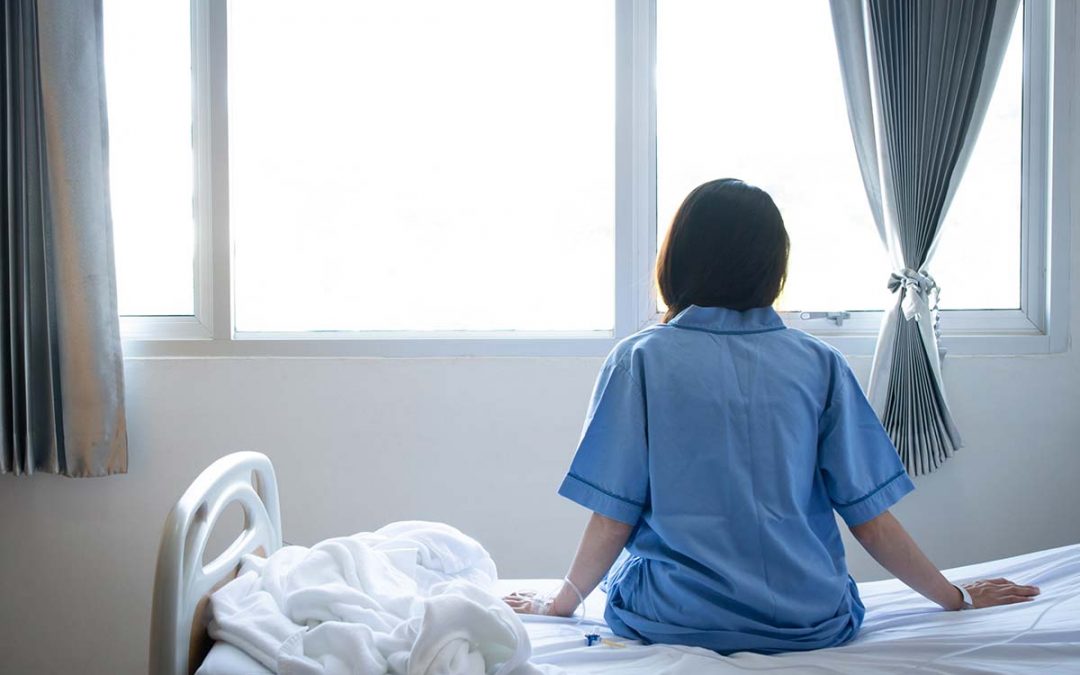While emergency rooms are increasingly crowded with mental health patients, the ER isn’t typically the best environment for these experiences. Psychiatric wards and hospitals, on the other hand, are specifically designed to help mental health patients stay safe from self-harm and elopement. In this post, we’ll dive into the psychiatric room design features that are ideal for mental health patients.
ER vs Psychiatric Hospital for Mental Health Crises
Psychiatric hospitals are the ideal facilities for mental health patients, but there aren’t always enough beds available to accommodate those in need of them. When this happens while a patient is having a mental health crisis, they often end up staying in the emergency room for an extended period of time. In fact, a survey by the American College of Emergency Physicians, showed 84% of physicians said psych patients were being boarded in their emergency departments.
Emergency rooms are effective for immediate, life-threatening support, like suicide attempts, self-harm, and threats of harm to others. Prolonged emergency room stays, however, can lead to increased stress and anxiety due to factors such as bright lights 24/7, constant hustle and bustle, beeping monitors, changing staff, and more. This type of environment can potentially inflame the crisis that brought the patient to the ER in the first place.

RELATED: Treating Mental Health Patients in the ER
Key Elements of Psychiatric Room Design
Psychiatric rooms and wards are better environments than the ER for mental health patients because their designs are conceived to reduce safety risks — while helping the patients feel as comfortable as possible. At the same time, appropriate design enhances visibility, so the behavioral health staff is able to keep an eye on vulnerable patients at all times.
An environment that helps decrease stress can positively impact the patient’s healing process. In fact, the right physical environment can even have an effect on patient aggression levels. A study in Sweden published by the Journal of Environmental Psychology compared restraint usage between a hospital with updated design features to a hospital with old features. The study found that restraint use declined 50% in the new hospital compared to the old. That’s a significant reduction that undoubtedly supported their patient safety-focused efforts.
Safety Features of Psychiatric Rooms
Psychiatric rooms and hospitals have several key design features created for patient safety. Some of these measures include:
- No sharp objects in the room
- Walls with rounded corners
- Heavy or immovable furniture to prevent barricading or throwing
- Doors that swing outward
- Tamper-resistant fixtures and breakaway shower rods
- High ceilings
- Room placement away from entries and exits
- No glass mirrors and televisions placed behind Plexiglass
- Open floor plans for visibility
See more safety design features here.
Design Features to Promote Healing and Reduce Stress
Some of the environmental design features that help patients feel at ease include:
- Ample natural light
- Walls and art in soft, calming colors
- Soft lighting instead of harsh fluorescent lights
- Comfortable furniture
- Bright, open public areas
See more soothing design best practices here.
Conclusion
Proper psychiatric room design helps improve patient and staff safety, while aiding in reducing patient stress levels so they have better care outcomes. Another safety precaution behavioral health facilities take is implementing the use of ObservSMART for compliant patient monitoring.
Utilizing the ObservSMART technology in psychiatric emergency settings provides validated observation compliance for high-risk patients. The system consists of comfortable, Bluetooth-enabled wristbands that sync with staff tablets to ensure required patient observations are conducted within the appropriate proximity — and at the right intervals. This ensures 1:1 observation adherence, significantly reducing risks related to self-harm, suicide, and elopement.
In addition, you have the ability to customize time intervals and proximity settings per patient as needed, allowing for intensive monitoring of multiple patients at two-, three-, and four- min intervals. This helps to reduce an over-reliance of 1:1 monitoring and frees up staff members to tend to admissions and patients’ needs.
With increasing psychiatric admissions across the country being met with lengthy ED boarding times, the importance of creating and maintaining a safe environment is a top priority for those in need of mental healthcare.
If you’re interested in improving patient safety in your facility, contact us today to find out how ObservSMART can help!

